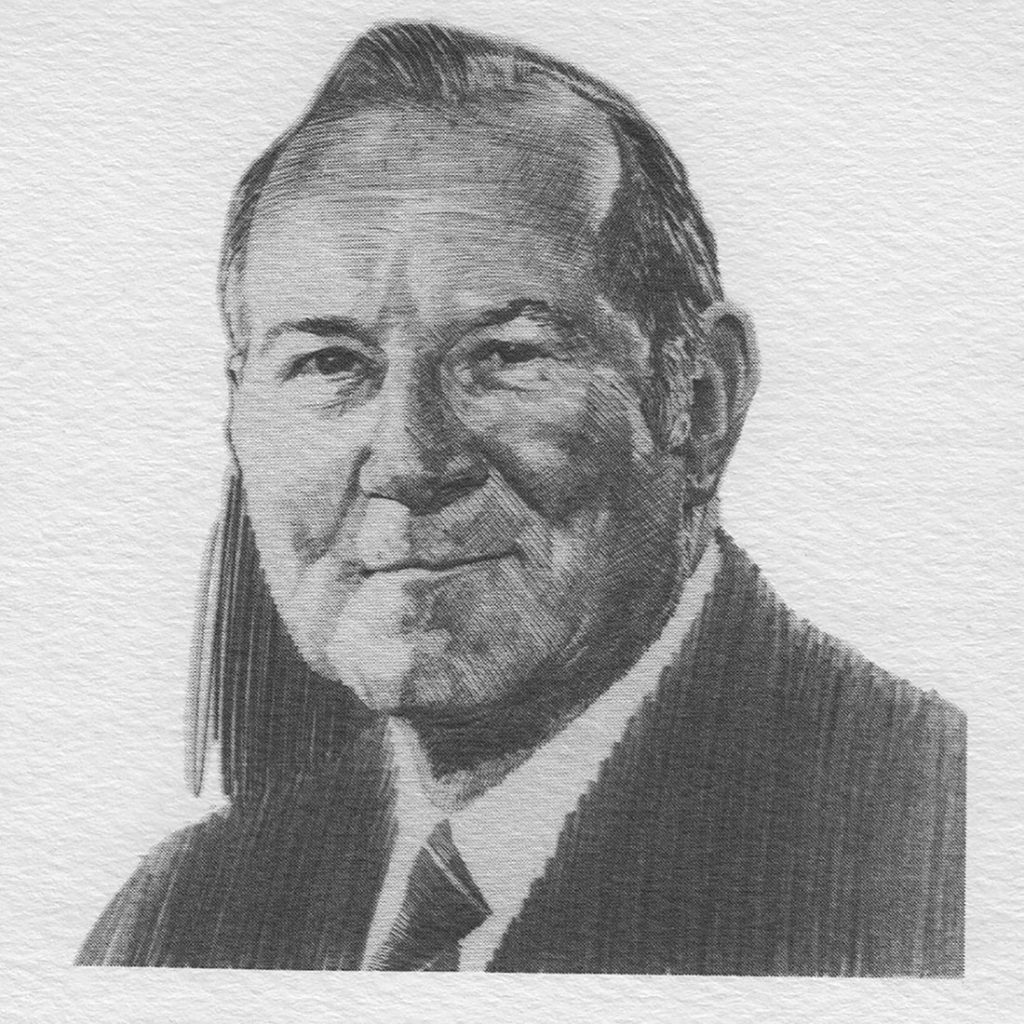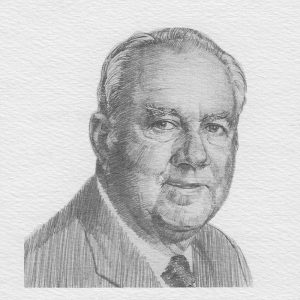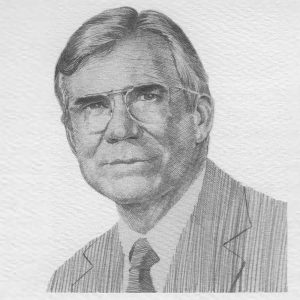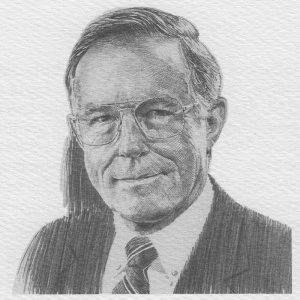John M. Harbert, III (Chairman of the Board of the Birmingham-based Harbert Construction Corporation) has been called a maverick – a gambler intent on defying odds, trusting in his innate abilities and the benevolent smile of Lady Luck. Many would describe him as a true entrepreneur.
Through astute management and creative financing, he developed a one-man construction company into a diversified corporation that has had as many as 5,000 work crews on four continents and that has earned a reputation for making a valuable contribution to every community it has been part of.
John Murdoch Harbert, III, was born in Greenville, Mississippi, on July 19, 1921 – the son of Mae (Schooling) and John Murdoch Harbert (Jr.). Even as a youngster, John Harbert was one who “walked to the beat of his own drummer.” His only major accomplishment during his teenage years was earning the rank of Eagle Scout.
When he graduated from high school in Gulfport, Mississippi, in 1939, he had no idea what he wanted to make his life’s work. When he entered Alabama Polytechnic Institute (Auburn University), he chose engineering as a major because a friend had done so. His record at Auburn was not a distinguished one. In fact, at one point, the dean of the engineering school told him he would never make it as an engineer. Five hours away from earning a degree in civil engineering, John Harbert was called to active duty during World War II. His unwillingness to conform kept him a buck private; but perhaps it was that same resoluteness that kept him alive in the bitter months of combat, including the Battle of the Bulge.
After discharge, he returned to Auburn and completed his degree in civil engineering in 1946. Then, with the money he had won shooting dice on the troopship home, he started his one-man construction company. Using army surplus equipment and employing unskilled workers, he with his crew built a bridge in rural Alabama. John Harbert paid himself only enough money to cover his room and board. He had one all-purpose truck which he drove to and from work. When he was able to afford a second truck and realized he could not drive both trucks, he has since said that he learned a basic principle of management – delegate responsibility to responsible people.
This one-man construction company soon began to attract other young engineers who were willing to take a risk on him and on themselves. Together they embarked on a path with many ups and downs, a stop sign here and there, and more than one dead end – which they simply plowed through.
Harbert Construction Co. built bridges, highways, dams, and reservoirs. When competition became too keen in the Southeast, the company ventured into other markets often under circumstances that more rational contractors refused to tackle. In Central and South America, Harbert crews laid pipelines and constructed sewer and water systems to improve living conditions in underdeveloped countries. Projects in other parts of the U.S. and the world were subsequently undertaken. The company has since built, for example, an airbase in the Negev Desert; several power plants across the United States; a desalinization plant in Abu Dhabi, United Arab Emirates.
In an effort to generate a steady cash flow, John Harbert led his company into various business ventures – ranging from producing limestone to developing one of the nation’s largest coal mining operations (with a “mountaintop removal method” since adopted as the industry standard). Real estate development and security services have also flourished under the Harbert umbrella over the years. In Birmingham, Harbert built the Red Mountain Expressway and Riverchase, a 3000-acre planned community that is a model for functional, attractive land use in a natural setting, the Riverchase Galleria, and the AmSouth/Harbert Plaza.
Through the years, Harbert Construction has executed every job – large or small – with quality workmanship and attention to the public convenience. Harbert Corporation – once the largest privately-owned company in Alabama – has in the last few years been “downsizing” (either closing or selling a number of its divisions). However, the company still has at least three major areas: Harbert Cogen, which has investments in alternative electrical generation facilities; Harbert Realty Services, which owns and manages various commercial properties; and Harbert Machine Co., Inc., a steel fabricator.
Perhaps because of his early training in the Boy Scouts, John Harbert has made sure that community involvement is a key component in his and his company’s life. He has contributed his time, funds, and leadership to numerous community organizations and activities including the Birmingham Museum of Art; the Eye Foundation Hospital; Junior Achievement of Alabama; and the Birmingham Council of the Boy Scouts of America. He has also served on the boards of various state and national corporations. To every meeting of every board on which he has served (whether that of a not for-profit or a for-profit organization) John Harbert has brought his engineer’s logic, vision, and decisiveness.
John Harbert has been especially generous of his time and support to educational endeavors, having served as a guest lecturer on several college campuses and on the Board of Trustees of Birmingham-Southern College; the American University in Cairo, Egypt; and the Alabama School of Fine Arts. He has donated funds for the construction of the John M. Harbert Engineering Center at Auburn University; the Marguerite Jones Harbert Building at Birmingham-Southern College; and has established and financed the Harbert Writing Center at the University of Montevallo, which has become a model for college composition labs.
The awards that John Harbert has received attest to the myriad contributions he has made over the years. He has been named Man of the Year (or its equivalent) by such diverse groups as Birmingham Women’s Committee of 100, the Alabama Society of Fund-Raising Executives, Alabama Lions Club, Alabama Marketing Association, American Society of Landscape Architects, and the National Management Association.
He holds honorary doctorate degrees from the University of Montevallo, Auburn University, Birmingham-Southern College, and Cumberland College (in Kentucky). He was among the first inductees into the Alabama Engineering Hall of Fame and was the 1981 Auburn Outstanding Engineering Alumnus. He has been inducted into the Alabama Academy of Honor and been presented the Distinguished Eagle Scout Award by the National Council of the Boy Scouts of America. Just this year he was presented the Non-Member Outstanding Achievement in Construction Award by the Moles, an international association of leaders in the construction and engineering industry.
John Harbert is married to the former Marguerite “Wita” Jones. They have three children: John M. IV, Raymond, and Margie.
The story of the life of John M. Harbert, III, is a story of individual ingenuity in the American system of free enterprise. While building a company, he has been a useful, responsible, honorable, and compassionate citizen. He serves as a model for future generations of entrepreneurs to emulate.






